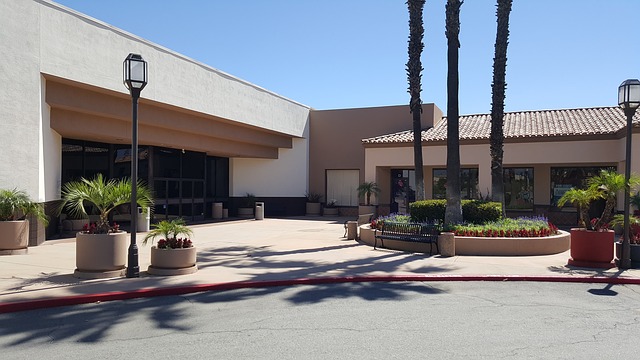Why Commercial Real-Estate (CRE)?
As an investor, you work hard for your money, so that money works for you in return. One such savvy way to accomplish it is to invest money in real-estate, particularly in commercial arena. You ask why that is! Well, for the simple fact that whereas a residential property is valuated primarily on the ‘Comps’ in the area; the commercial real-estate backed business or property, on the other hand, is driven by ‘Forced’ appreciation. Granted, location and ‘Comps’ are still important factors to consider, however, a commercial property can be valued at a higher pricing tier in comparison to other similar properties in the area, owing to the gross revenue and income it can generate. Although, a commercial property may have some pending concerns regarding its age, location, improvements it may require or some other challenges yet, if the operating business on the property is producing income, it allows for higher valuation than a comparable property whose income generation capability is challenged at best, or absent at worst.
Another lesser discussed benefit of owning a commercial real-estate property is the very fact that it has an operating business model – whether it is the case of increasing sales in retail, adding value to services you offer, or whatever else the case may be, if there is a mechanism of producing income from this asset, there are proven techniques to add value to your business which in return will increase the income it can generate. This leads to an increased valuation of the underlying commercial property. A residential property on the other hand is bound strictly to the ‘Comps’ principle of valuation. Even in the cases of Multi-Family residential, there are limits to how much rent increase one can expect. You may throw in a crystal-lit chandelier or add other luxuries if you wish, however, the rent it can fetch in the market is only marginally over what a comparable rental property in the market offers. So, you see, it is our strong opinion that investing in commercial real-estate property is far more lucrative than in a residential property. Having a grasp on this understanding, very often, a prospective buyer would ask the next question: How does one valuate a commercial real-estate property? But first, let’s define what Value means in terms of pricing a CRE asset.
How do we define CRE Value?
A commercial real-estate property has a value to their respective stakeholders based on the purpose it serves. This purpose can take many shapes and forms, but at the end of the day, it is an investment and it reflects the projected future income stream you are able to obtain in the current ‘fair market value’ that you are willing to pay. An inherent aspect of commercial real-estate is its potential to generate income, ideally enough to not only have a positive cash flow for operating the business, but also hopefully offer return of investor’s investment within a projected payback period. Furthermore, this positive cash flow should offer a healthy margin and a Return on Investment (ROI) within the expected range notated on the Financial Proforma.
Alright, so we have determined that rather than any intrinsic value of sorts, your commercial real-estate asset is valuated on its income potential. So now we need to determine how income growth is analyzed and what specific factors are considered to arrive at a value that can be sustained in the open market. Let’s review some standard measures in detail, shortly.
But first, let’s quickly review Cash Flow Analysis for an income generating commercial property. It is a very simple case of mathematics and more or less, follows a standard format. We are going to throw in standard working definitions that as an investor you are all too familiar with. Here is a gentle recap on some of those definitions.
Gross Revenue or Gross Scheduled Income (GSI)
This is simply the gross revenue your Commercial real-estate business produces in case of Retail/Service oriented business, or Gross Rents that are received in case the CRE asset is a rental class – such as Office with tenants, Retail Shopping Mall with tenants and Multi-Family Residential (Apartments) with tenants.
Collection Loss or Vacancy
Collection Loss is simply an amount that can be potentially lost or not realized due to various factors. For instance, in a business where Investor is providing a service or selling products directly to consumers, Cost of Goods Sold (COGS) is the direct cost of providing such service that is not realized into the Income. In case of Investments properties where Income is realized via Rents, you must consider the time-period in a year where units are empty and have no tenants paying the rent. Lenders typically use a formula of certain percentage of GSI as the Vacancy factor. This percentage point can vary based on the sub-markets where investment properties are located.
Effective Gross Income (EGI)
Effective Gross Income is simply the Revenue that is available to service Operating Expenses, Property Taxes and any Debt Service.
Effective Gross Income (EGI) = Gross Schedule Income (GSI) – Collection Loss (Vacancy)
Operating Expenses (OE)
Wouldn’t it be amazing that you put down Cash and acquired an Income producing property without ever having to spend another dime on this asset? Wishful thinking, eh! However, in practice, the CRE assets that produce revenue and income have some standard recurring expenses you have to endure in order to realize any effective profit. Although, there is no standard one list of expenses we can jot down here, however, every business have a set of expenses that can be broadly classified under a handful of categories:
- Insurance
- Taxes
- Maintenance
- Marketing
- Utilities
- Management & Payroll
- Accounting & Legal Fees
Net Operating Income (NOI)
A Net Operating Income or NOI is your effective Income after all the Operating Expenses have been paid, not including the Debt Service. Hence:
Net Operating Income (NOI) = Effective Gross Income (EGI) – Operating Expenses (OE)
Once you have gathered the GSI, EGI, OE and NOI, it is time to pop open a calculator and head back to working out some of the valuation criteria using standard measures we promised we will look into. Let’s dive deep into what Investors need to be reviewing next to ascertain the property valuation.
Standard Measures used for determining the Value
Figuring out the Gross Revenue and Income potential of a property is the first step in the process of determining how you value a CRE asset, which allows you to compare it to other properties you might be considering. On the surface, a property A may be giving you a higher amount of NOI over another property B, but those numbers in isolation do not mean much, as we begin to explore – what matters is the rate of return you want to accomplish for a given amount of money that you put down in acquiring the property and the number of years you expect to hold the property. There are far too many formulas and measures to consider, but for the sake of this article, we will focus our attention to only 2 major ones that focus primarily on setting a sales/purchase price and they are:
Cap Rate
Gross Rent Multiplier (GRM)
Cap Rate
Capitalization rate, or in short, Cap Rate is a quick way to determine an estimated pricing value for a property. It takes into account the Net Operating Income (NOI) and the going Cap Rate in the specific sub-market where property is located. Computationally:
Cap Rate = Net Operating Income (NOI) / Asset Value
Take for instance, if the average NOI of the CRE is $100,000 and the going Cap Rate is 10% in the market, we arrive at $1M as the valuation.
So what does Cap Rate tells us? It is a quick and easy way to ascertain a comparative
While Cap Rate is a quick and easy way to determine the property’s value in the specific market, however, it is susceptible to its flaws, given that it is dependent on the NOI of the property. Unless, the NOI is stable and can be shown to stay consistent year-over-year, the Cap Rate is at best an indicative of the asking price and size up valuation for a given property in comparison to other CRE you might be considering in similar asset class.
Gross Rent Multiplier (GRM)
Another popular way to valuate an income producing commercial property is finding out the corresponding Gross Rent Multiplier (GRM) in the market the property is located. The way it is different from Cap Rate is, instead of being dependent on the NOI of the property, it simply considers the Gross Revenue or GSI. In simplest of terms:
Value = Gross Rent Multiplier (GRM) X Gross Schedule Income (GSI)
For instance, if let’s say a property has GSI of $150,000 a year and the prevailing GRM in the area is 6, then the approximate Value of the property would be $900,000.
The way to find out the GRM prevalent in the area is to review other similar listings and try to gather their Gross Revenue numbers. Checking out local CRE listing and speaking with local RE Brokers who are knowledgeable of the market is a good way to estimate what GRM number is appropriate to valuate a prospective CRE property under consideration.
As is the case with Cap Rate, GRM is also not without its limitations, however, together Cap Rate and GRM are two great ways to quickly estimate valuations of properties and size them up against each other while shortlisting them.
Conclusion
Investing in Commercial Real-Estate is a very lucrative way to reward yourself with recurring income streams. However, just like investing in any other asset class, there are inherent risks, but with right tools and measures applied, you can quickly realize how different CRE properties in the available market inventory stack up against each other and those 2 popular Valuation methods – Cap Rate and GRM can help you make a sound choice.





